Posts Tagged ‘Strait Street’
-
CORNER COMFORTS
 “You wouldn’t survive in this business if you are not brought up in it since childhood. It is just too demanding and it takes up your life completely,” insisted Frankie Cutajar, the owner of Lady Di Pub in Tignè Street, Sliema.
“You wouldn’t survive in this business if you are not brought up in it since childhood. It is just too demanding and it takes up your life completely,” insisted Frankie Cutajar, the owner of Lady Di Pub in Tignè Street, Sliema.“On the other hand, if the seed of entertainment has been nurtured in your blood from an early age, it is difficult to let go of such an engaging and colourful world,” he said as he laughed heartily and poured a tin of golden beer into a large glass for a client.
Cutajar hails from Valletta. Two of his family members are the renowned late musician Oscar Lucas and popular singer Joe Cutajar.
“Back in the old days, their cheerful attitude and exquisite talent used to light up the thrilling atmosphere of Strait Street. I can still remember the time when 10,000 foreign soldiers sought that area in Valletta each week and all those who had a business there, concocted new ways to attract them to their locale.”
“My uncle Oscar Lucas played in various venues. Together with Jimmy Grech (also known as Jimmy l-Irish), he owned the Las Vegas which was the first nightclub to open in Malta and boasted a capacity of 500 seats. It was huge, running from the area where today one finds the Marks and Spencer store and going up to the Embassy. At the age of 12, I worked as a commis waiter in this nightclub, serving customers which were mainly young couples, between 6:00pm and 8:00pm.”
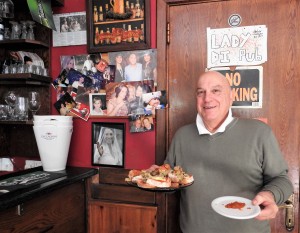 Cutajar got married when he was 18 and kept working at Las Vegas until it closed its doors.
Cutajar got married when he was 18 and kept working at Las Vegas until it closed its doors.“The British Forces’ departure from our islands drained all the energy from Strait Street, turning it into a shadow of what it was. Paceville became the new attraction for the younger generation while Valletta died out during the evenings. Eventually, Jimmy l-Irish, my older brother Harry and I acquired a bar in Melita Street and called it Pippo’s.”
“Later on, my brother and I also took over a business in Tignè Street, Sliema. This place was originally a bar known as Neriku and it was run by my grandfather and grandmother. After it served as an antique shop for some years, we decided to open it as a pub. Many of the visitors who came to Malta and stayed at the surrounding hotels in Sliema were British. So we had no doubts whatsoever about what we were going to name our new pub.”
 A framed copy of a newspaper feature which hangs on one of the walls narrates how the name Lady Di Pub came to life. Cutajar recounted this incident proudly.
A framed copy of a newspaper feature which hangs on one of the walls narrates how the name Lady Di Pub came to life. Cutajar recounted this incident proudly.“I was having a meal with a well-connected friend of mine at a London restaurant when he introduced me to Lady Diana. I told her that I would be naming a bar after her to record the memorable event of her marriage to Prince Charles. Shortly afterwards, I saw her again at a film premiere in Leicester Square and she reminded me about it.”
Lady Di Pub opened its doors right on Wednesday, 29 July 1981; the day of the eventful fairytale wedding.
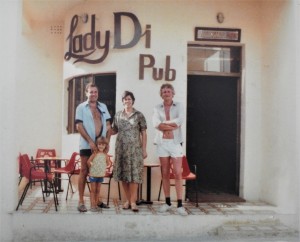 “This is how the pub looked at the time,” Cutajar said as he pointed at another old photo. “It consisted of just two small rooms. However, it had a very good clientele.”
“This is how the pub looked at the time,” Cutajar said as he pointed at another old photo. “It consisted of just two small rooms. However, it had a very good clientele.”Meanwhile, Pippo’s bar in Valletta was turned into Da Pippo’s restaurant and his brother Harry stayed to manage it. Frankie opted to run the pub in Sliema. In 2006, the Lady Di Pub was rebuilt after the property was earmarked for development and was demolished.
“Although the pub was new, I decided to recreate its old British soul. I knew that my clients would appreciate the warm feeling of a unique traditional corner huddled amongst the tall and modern buildings.”
In recent years, Sliema’s architectural context has changed considerably. Huge, inanimate buildings are replacing traditional stately homes, a small number of which still survive in Tignè Street.
“Times change and people have to move on with the progress which is generated. Sliema is not Valletta. Whereas Valletta is a historical city of culture, Sliema is a business hub and a touristic area. The more modernized it is, the more people it attracts, and the more customers will come to this pub,” Cutajar stated as he winked playfully.
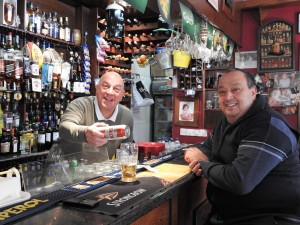 “His charismatic character and that of his son Keith who also works here are the secret of the success of this place,” revealed Ġanni Fenech, a regular client who was having a beer at the bar. “They have a way of making everyone feel welcome and they are also very good in the kitchen. The appetizers in this bar are always bountiful and delicious, urging you to keep on drinking so that the food continues to come out. Seasoned bread, pasta, ricotta and pea pies, cheesecakes… They simply taste like heaven with a glass of beer.”
“His charismatic character and that of his son Keith who also works here are the secret of the success of this place,” revealed Ġanni Fenech, a regular client who was having a beer at the bar. “They have a way of making everyone feel welcome and they are also very good in the kitchen. The appetizers in this bar are always bountiful and delicious, urging you to keep on drinking so that the food continues to come out. Seasoned bread, pasta, ricotta and pea pies, cheesecakes… They simply taste like heaven with a glass of beer.”Right on the point, Frankie came out of the kitchen with a plate of thickly sliced crusty Maltese bread spread with kunserva, a sweet tomato paste, and topped with olives, onions, lettuce and broad beans.
“Especially on Fridays and during weekends, Lady Di Pub is full of people and it stays open until the early morning hours. Some of our clients work in the nearby offices and come here to end the week in a good mood and meet friends. A number of others are regulars from Sliema including a small group of elderly people who have been gathering here each Sunday for the past 30 years! Other locals come from various areas around Malta. However, the majority of our clients are foreigners.”
Frankie starts his day at around 8:30am by doing errands, including buying fresh bread. After enjoying a coffee at a nearby coffee shop, he opens his pub at 10:00am. Soon, the first clients will come in and he starts preparing some inviting appetizers. By now, his long experience and a good knowledge of his clientele have furnished him with an invaluable insight of who will be calling at his pub on each day and what he will need to prepare.
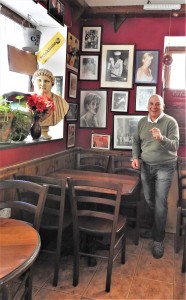 “We are here to make our clients feel comfortable. Should they wish to have lunch or dinner, we can cook anything to their liking, once they advise us beforehand. Last week, we cooked a selection of pasta, fried rabbit and rib-eye steak for a group, and they surely loved it!”
“We are here to make our clients feel comfortable. Should they wish to have lunch or dinner, we can cook anything to their liking, once they advise us beforehand. Last week, we cooked a selection of pasta, fried rabbit and rib-eye steak for a group, and they surely loved it!”Whilst the younger generation prefer to seek out Keith’s company, the older clientele feels closer to Frankie.
“I am 67 now but still going strong,” Frankie joked as he turned to a laptop and turned on some music. “Back in Valletta, we enjoyed live music at our nightclub. Until some years ago, I had a juke box here. Now I have to rely on this new technology. Flexibility is a must in such a business. Nowadays clients demand to hear particular songs while having a drink and this is the most practical way.”
Culture change is also evident in the choice of requested alcohol and in the clientele’s attitude.
“In the past, people preferred whisky especially Jack Daniels. We also served gin and vodka. Today, very few will ask for gin or vodka and the whisky which we sell is mainly J & B, Jameson, and Johnny Walker Black. Earlier generations used to come in and offer drinks to friends and to other people in the pub. We also had incidents when people got heavily drunk and still insisted to have more drinks. The present generation will generally order and pay for their own drinks, whether male or female. They are also more aware of the risks of over-drinking and they rarely get drunk.”
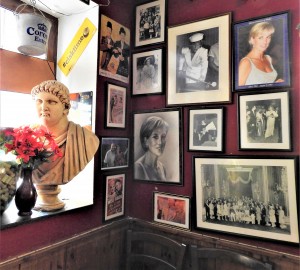 Several framed photos of Lady Diana keep a watchful eye over the pub’s customers.
Several framed photos of Lady Diana keep a watchful eye over the pub’s customers.“These were given to us by her photographer who became our friend,” Frankie explained. “Customers love to look at them especially now that she’s gone. She was very cherished by the people and they still miss her terribly.”
After her tragic death on 31 August 1997, Lady Diana’s fans were distraught. They frantically searched for anything which connected them to her.
“For a number of days after her demise, people left flowers at our doors as a sign of mourning. A British journalist for The People came to visit the pub and interviewed me about this experience. It was certainly a very disturbing loss but in this little corner in Malta, Lady Di’s memory is still very much alive.”
(This feature was published in SLIEMA TIMES – APRIL 2018 issued with The Times of Malta)
-
A life of prayer
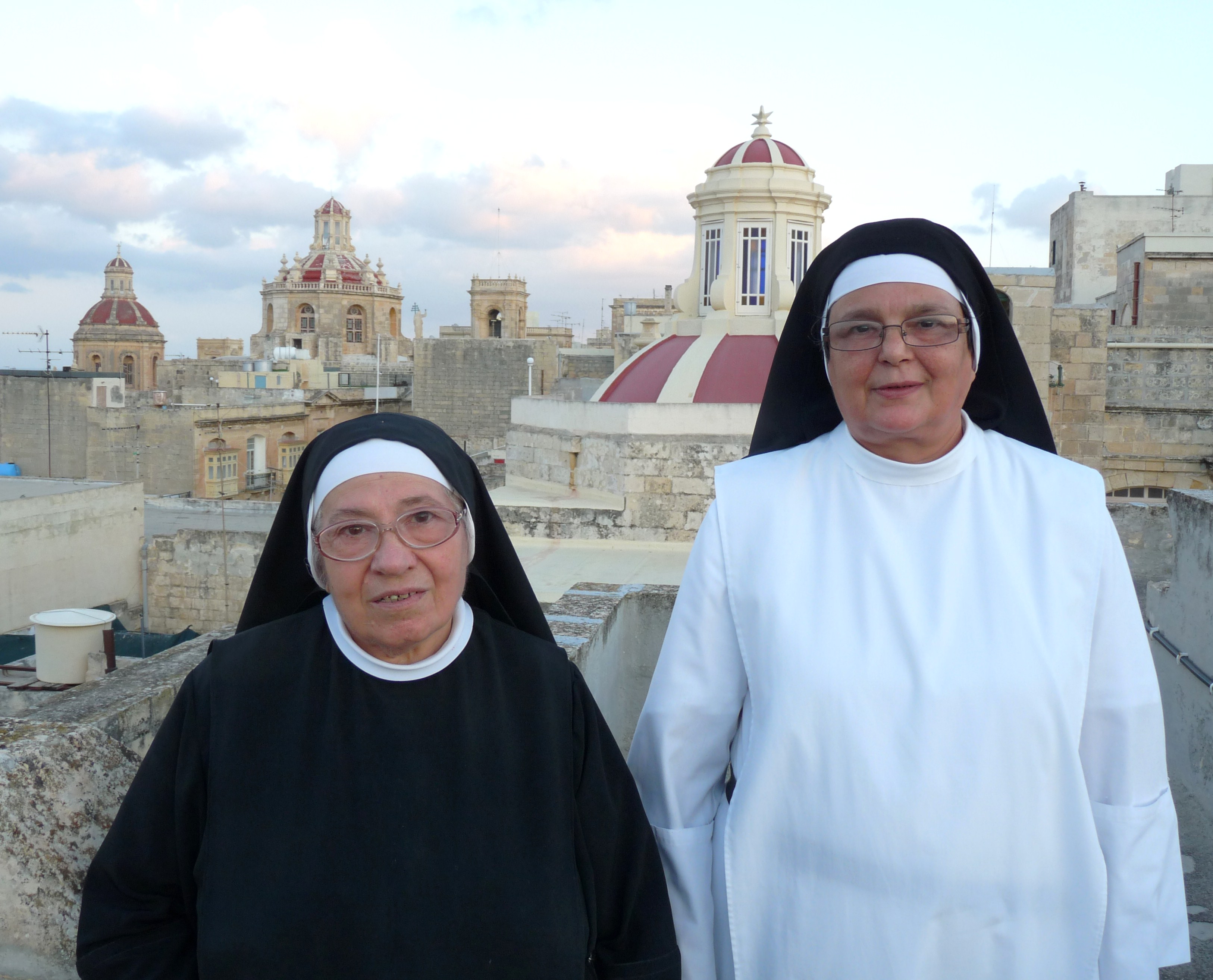
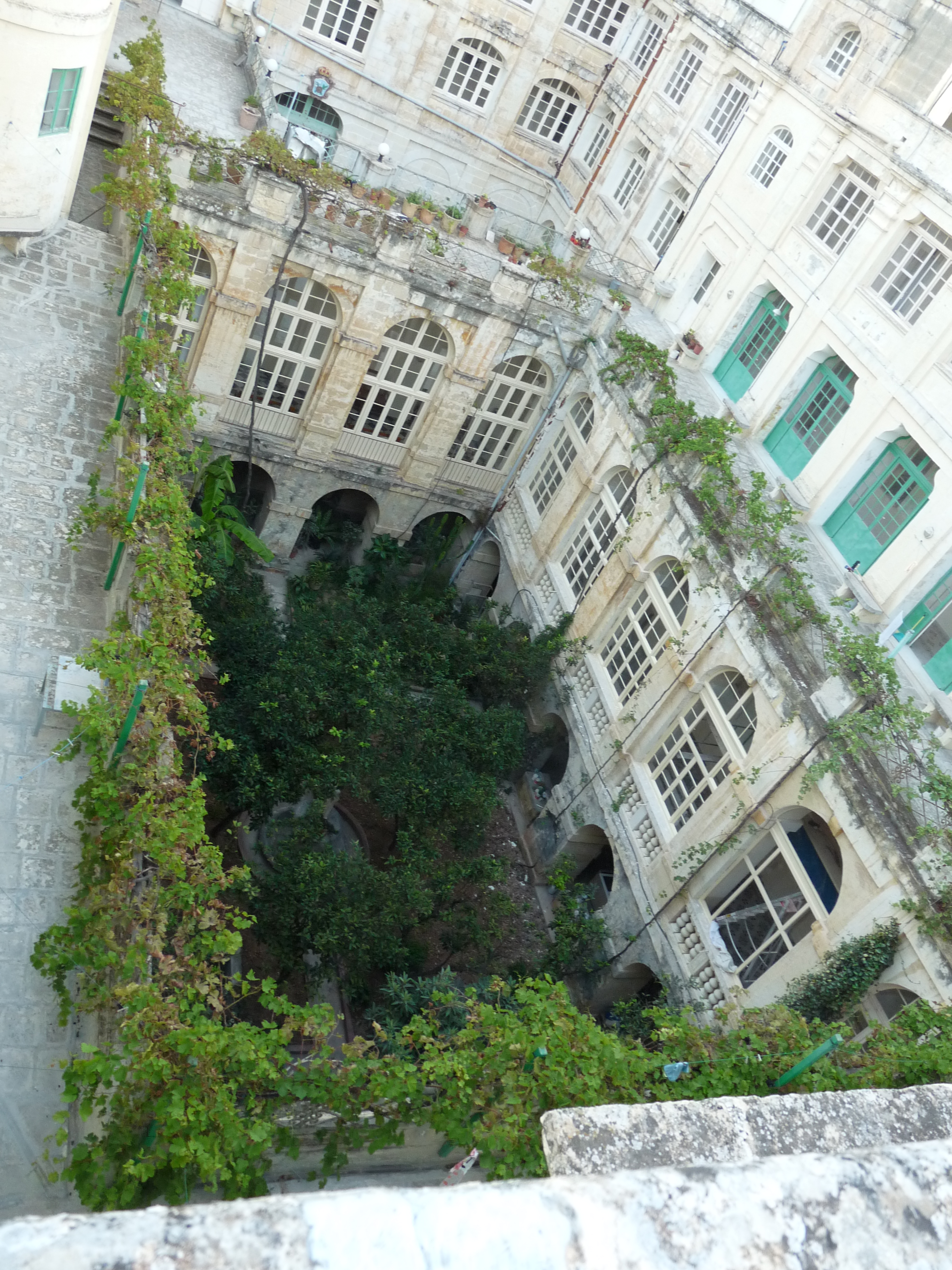
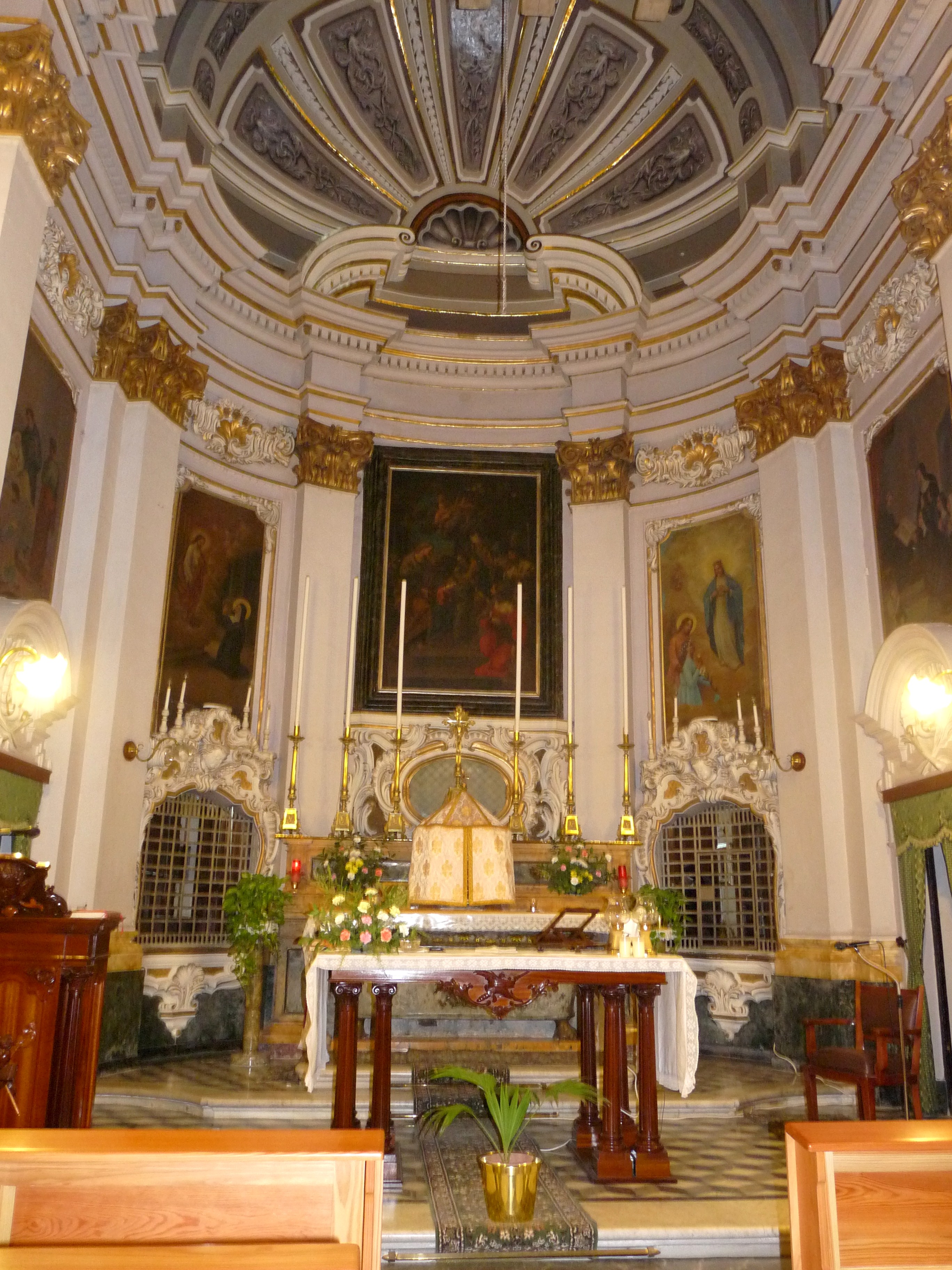
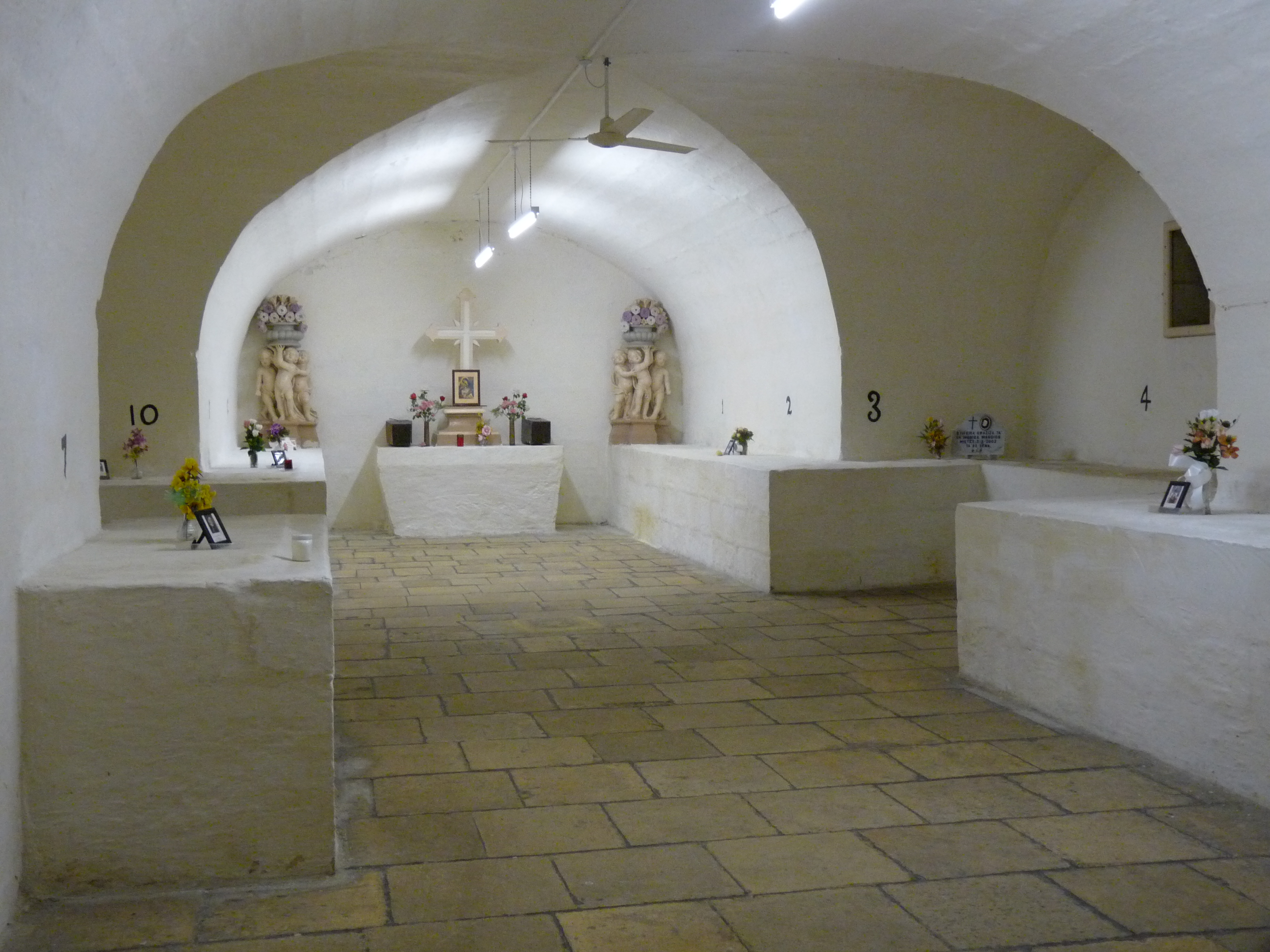
The concept of life as a cloistered nun has often intrigued people. How could one choose to deny oneself the privilege of freedom and instead opt for a life locked up in a monastery, when the rest of humanity dreaded even the thought of it?
As I knocked on the heavy door of the Monastery of the Augustinian Cloistered Nuns of St Catherine which is located in Republic Street, Valletta, I wondered how I was going to probe for an answer to this dilemma. Soon, a female voice responded from the intercom and when I identified myself, the door opened automatically and I stepped inside. The sight of three barred windows amid a thick white-washed wall bound me at a standstill and I stood there in silence and awe, unsure of what I was expected to do.
Indeed, I was quite surprised when Rev. Mother Abbess Sr. Michelina Mifsud called me in, for I had believed that this interview would take place behind bars and that I would never have the opportunity to look at her face.
“This would not have been possible if you had come to us about eight years ago,” responded Sr. Michelina as she read the question in my eyes. “At that time, you would have needed a special permit in order to contact us, and on your arrival, I would have sounded a bell so that all the other nuns would know that you’re here and they would retire to their rooms until you left.”
“Necessary communication with people used to take place only behind those bars,” she continued to explain. “We could neither read newspapers, nor hear the radio or watch television. Our lives were meant to be completely shut from the rest of the world so that we could focus only on God and our prayers. None of the nuns could get out of this monastery except when they needed aid for serious health reasons. We could not even visit our parents when they were sick and if they died, we were not allowed to attend their funeral. However, at times, our close family members could come to see us at the monastery and we greeted each other from behind the bars.”
I felt dumbfounded and looked down at the floor, searching for a way to question her how and why, until I could not resist no more and spoke out.
“This style of life does not make us feel miserable because this was our choice,” responded gently Sr. Aloisia Bajada who had joined us silently. “Our faith keeps us strong and prevents us from feeling depressed. Certainly there are moments when life gets pretty hard but whose does not? I am sure that even though you did not choose to become a cloistered nun, you too have to make several sacrifices for your family. So, you see, there is not so much difference between us.”
I watched them closely, trying to sense any strange move or reaction which might reveal a hint of unhappiness but instead I was met with sincere serene demeanour which was almost saintly.
“Sometimes even we find it difficult to understand and explain our vocation,” expanded the nuns. “We tend to regard it as a gift from God.”
We started to walk around the monastery and here I was in for another revelation. For the nuns did not live within some somber building but in a spacious and historical palace which was constructed during the period of the Knights of St John.
“This monastery has a long and interesting history,” told me Sr. Aloisia as she watched me admire the old paintings hanging on the walls, the colourful painted floor tiles and the exquisite architecture. “In my earlier years, it was my joy to delve within this monastery’s ancient archives which go back to 1606. They narrate detailed incidents and engaging stories which took place in this building and in the lives of the nuns that lived here hundreds of years ago. Surely, it is a pity that very few people have ever laid eyes upon them!”
At 88 years, Sr. Aloisia is the oldest of the remaining six nuns in this monastery. I was delighted by her passion towards the history of this place which has been her home for the last 70 years. As she led the way ahead, she informed me that originally this building was the residence of Marquis Giovanni and Katarina Vasco Oliviero, and it was known as Casa Vanilla. In 1576, this couple went through a rough time when their son contracted the plague, and in desperation, Katarina, who was a devotee of St Catherine, pledged to donate her house to the Church if her son survived. The boy did survive and Katarina was adamant to keep her word. However, when in 1611, she got to know of a group of girls known as ‘Orfanelle della Misericordia’ who had decided to become cloistered nuns and were taking care of children with family problems, she decided to give her property to them.
In order to change this palace into a monastery, the couple had to buy some of the neighbouring properties so that they could accommodate about 45 nuns, 15 girls and a chapel. This is why today, this monastery stretches out into Republic Street, St Christopher Street, Strait Street and also a section of St Dominic Street. Incidentally, within a year from their testament this noble couple died and since their son had already died before them, the cloistered nuns of St Catherine inherited all that remained.
By time, it became customary for some of the girls of the nobility to take their vows and join this monastery, and this included Grandmaster Manuel Pinto de Fonseca’s sister. Certainly, these girls brought with them generous dowries which supported a comfortable life. However, in 1714, the monastery required huge structural changes and much of the money ran out. Then, in 1798, when the French occupation took over Malta, the nuns found themselves in a dire state of poverty and they could not afford to take care of children any more. The number of nuns dwindled to eight but once the French left our islands, new nuns joined the monastery and life started afresh.
We entered into a lift which took us straight up to the monastery’s huge roof. A breath-taking view of the splendid architecture of the other Valletta buildings welcomed us and a fresh breeze whirled around us. The nearby wide blue sea was shiny and tempting, and we could see sea-gulls gliding smoothly over its surface.
“How can we feel restricted when we have all this to enjoy?” the two nuns asked me with a bright smile on their faces.
We stood together in silence, relishing the stillness and the beautiful environment which surrounded us. Then, the nuns shared with me what had led them to make this particular choice in life.
“Look down there,” asked me Sr. Aloisia as she indicated far below at the monastery’s garden which originally was the quarry from which the stone for this building was extracted. “During World War II, that garden suffered a direct hit and the nuns went to seek refuge at Ta’ Ċenċ in Gozo. I was 16 and from Xagħra and I did not even know what a cloistered nun was. One day, I saw some creative sewing which they had done and I felt curious to meet them. However, people told me that this was impossible, unless I wanted to join them. I felt terrified at the idea that they could keep me with them and yet finally some older friends accompanied me to see them and I liked the nuns’ company. As time went by, I continued to think about them and when I was 18, I was sure that I wanted to join those nuns who had in the meantime returned to their monastery in Malta. And here I am.”
“I was also 18 when I took my vows and became a cloistered nun of this monastery,” told me Sr. Michelina. “Ironically when I was younger, a priest who often watched me visiting and praying daily in front of St Rita, had suggested to me that I should consider becoming a nun and I was furious! Oh, I want to enjoy life, I told him. The life of a nun is not for me! However, some time later, he convinced me to meet the Rev. Mother Abbess of St Monica who in turn invited me to spend some weekends with them whenever I wanted. Somehow, I liked the idea and little by little I got very close to these nuns until I could not imagine any other life but to stay with them. Then, one day, I went to visit Frenċ tal-Għarb and without even knowing me, he made a cross upon my forehead with some oil that was blessed by the Virgin Mary and he told me that I would soon become a cloistered nun in the Monastery of St Catherine and that eventually I would die there. When I returned home to my father and told him about this, he swore that I would not withstand the life of a cloistered nun for more than 15 days. And yet here I am still after 51 years!”
We went down again and this time I was shown the crypt where all the cloistered nuns of this monastery get buried. Interestingly, in this crypt, one finds also the tomb of the son of the original owners of this building.
From there, we moved on to the small chapel wherein the nuns attend to pray. “After 1963, we received new regulations and many things changed. One of these included the possibility of receiving the public in our monastery, even if we still stand behind bars. Indeed, within these last years, many individuals have sought us for spiritual help and advice. Many more have chosen to join us during mass and so people have grown more accustomed to our presence and I think that their respect towards us has increased, now that they know us better,” told me Sr. Michelina.
“Through these encounters, we want to show people that life does not end when you become a cloistered nun. We simply start a new chapter of a life which is simpler and closer to God. We have our daily chores, we pray and help others, and we also enjoy developing our talents in sewing, crochet and art.”
“We miss absolutely nothing here except the need for more nuns to join us as we are too few now and most of us are also too old,” admitted Sr. Aloisia.
I cherished their warm hug when they embraced me before I left, and for a moment I felt a distinct sense of happinness. Yet once the monastery’s door closed behind me, I was concerned about how these nuns will live, once they will be too old to take care of each other? And what will be this monastery’s destiny if one day these nuns will all fade away?
(This article was published in Focus Valletta Supplement in The Times of Malta dated 1st October 2014)
Travelogue
Archives
| M | T | W | T | F | S | S |
|---|---|---|---|---|---|---|
| « Jan | ||||||
| 1 | 2 | 3 | 4 | 5 | 6 | 7 |
| 8 | 9 | 10 | 11 | 12 | 13 | 14 |
| 15 | 16 | 17 | 18 | 19 | 20 | 21 |
| 22 | 23 | 24 | 25 | 26 | 27 | 28 |
| 29 | 30 | |||||
Recent Posts
- A MATTER OF FATE
- MALTA’S PREHISTORIC TREASURES
- THE MAGIC IS IN THE DETAIL
- THE SELLING GAME
- NEVER FORGOTTEN
- Ġrajjiet mhux mitmuma – 35 sena mit-Traġedja tal-Patrol Boat C23
- AN UNEXPECTED VISIT
- THE SISTERS OF THE CRIB
Comments
- Pauline Harkins on Novella – Li kieku stajt!
- admin on IL-KARNIVAL TRAĠIKU TAL-1823
- Albert on IL-KARNIVAL TRAĠIKU TAL-1823
- Martin Ratcliffe on Love in the time of war
- admin on 24 SENA ILU: IT-TRAĠEDJA TAL-PATROL BOAT C23